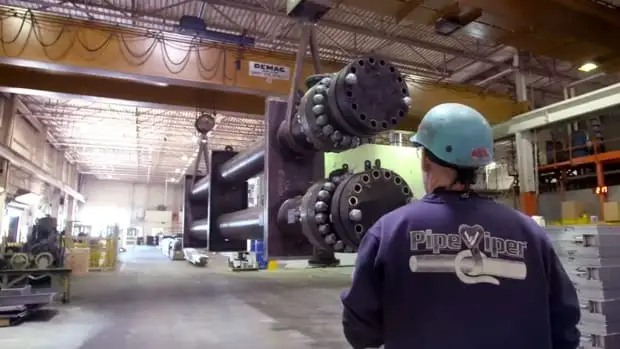Mercedes-Benz Energy Americas debuts residential battery storage for the U.S., leveraging EV-grade lithium-ion cells, solar integration, time-of-use shifting, and backup power, while scaling commercial and utility projects with demand response and frequency regulation.
Key Points
Mercedes-Benz Energy Americas is Daimler's U.S. unit selling lithium-ion storage for homes, businesses, and utilities.
✅ Modular 2.5 to 20 kWh packs; 10-year warranty; installer partnerships
✅ Supports solar self-consumption, TOU shifting, backup power
✅ Targets residential, commercial, and utility-scale demand response
photo credit: Mecedes-Benz
USA - GreentechGrid - (Nov 2, 2016) - We knew the Mercedes-Benz residential battery would be coming to the shores of America in early 2017. Now we know it will arrive with a whole new company.
Parent company Daimler AG has created Mercedes-Benz Energy Americas, LLC to sell stationary storage of all sizes to the U.S. market. Like Tesla, this is a car company that developed electric vehicles (EVs), amid the accelerating age of electric cars, and then put its battery expertise to work in a stationary storage product.
The Mercedes home batteries will also go head-to-head with fellow German emigrant Sonnen, a competition made all the more personal because Daimler hired Sonnen's former U.S. CEO, Boris von Bormann, to lead the effort. After three years of working on Sonnen's U.S. entrance, he's learned about the American appetite for storage and how to market to it, and now combines that experience with the resources and reputation of Mercedes-Benz.
Energy Americas will act as the U.S. counterpart to Germany's Mercedes-Benz Energy GmbH. Both companies develop and sell batteries made by Daimler's wholly owned subsidiary Deutsche Accumotive. This company has been manufacturing lithium-ion battery systems for Mercedes-Benz electric cars, so the batteries have seen rigorous testing and are built for much more intensive use than most stationary systems ever see.
Mercedes isn't just dipping its tires into the electric mobility craze. By 2025, the company wants to sell 10 or more EV models as part of its broader electrification plan, and it's investing 1 billion euros in scaling its battery production capacity. The company has bigger ideas than just cars, too -- it's envisioning an "electric mobility ecosystem" including automation, ride-sharing and home improvements like battery storage and EV chargers.
The residential market will be an early focus for the fledgling U.S. enterprise. The metallic gray modular system looks like a home appliance, stacks from 2.5 kilowatt-hours up to 20 kilowatt-hours and comes with a 10-year warranty. That goes on sale the first quarter of next year, as will larger commercial packages. Mercedes is looking for channel partners to distribute and install the systems.
Mercedes will also pursue utility-scale projects, and already has a contract to build a 1-megawatt containerized storage system to provide frequency regulation and demand response in PJM territory, as states like California explore EVs for grid stability.
Not in Germany Anymore
The residential battery will appear the same superficially after it crosses the Atlantic, but certain details will have to change.
"With a German household, it's a very simplified sale," von Bormann said. "There is one tariff structure throughout Germany. The only use case is solar self-consumption."
Germany's rooftop solar customers earn limited compensation for the solar they put back into the grid, due to declining feed-in tariffs. At the same time, the retail cost of electricity is quite high. These factors create a strong financial incentive for storing one's solar generation and using it throughout the day.
A similar incentive exists in Hawaii and the Caribbean islands, but in most of the U.S., residential storage lacks such a clear value proposition. That requires a more tailored approach that identifies different use cases for different demographics: time-of-use shifting and demand-charge reduction, where appropriate rate structures apply; off-grid, for those who want it; backup power, for households that want a cleaner, quieter sense of security from blackouts, and some EVs can power homes for days; and demand response, where utilities are looking for distributed assets to assist those efforts.
"You have to change your use cases, your software applications and your product applications to fit that market," von Bormann said.
The typical American household consumes more power than its European counterpart, so battery sales in the U.S. will likely run larger and require more powerful inverters than in Germany. Mercedes-Benz will manufacture the U.S. products in Germany initially, and evaluate that approach based on product demand and availability.
More Crowded Field
The announcement adds one more player to the growing field of competitors vying for American energy consumers' affection.
It also puts von Bormann in direct competition with former employer Sonnen, which focuses on residential batteries but also launched a commercial product this summer. There aren't any hard feelings, though, said Sonnen Director of Marketing Michelle Mapel. "It was an amicable departure," she said.
The company had planned to phase out the U.S. CEO role after establishing a presence there, she added. The U.S. branch will now operate under the direction of Jannik Schall as U.S. Country Manager, but will report more directly to global CEO Christoph Ostermann.
"This market is potentially massive, so there’s plenty of room for a lot of different products that serve different needs and give people options," Mapel said.
For his part, von Bormann shared the optimism about peaceful coexistence. "We’ll see some smaller companies brought into larger companies or leave the market, but I really think there's room for a few players to have significant market share."
The evolution from electric-car maker to stationary storage provider suggests a similar profile to Tesla. New entrants to the market have to contend with Tesla's strong brand recognition -- it introduced a lot of consumers to the concept of energy storage -- and its scale of production.
The production capacity expansion that Mercedes-Benz has undertaken is "similar to or even greater than" what Tesla is doing with the new Gigafactory in Nevada, von Bormann said, even as GM and Ford battery strategies diverge. And brand recognition will be a competitive advantage for as old and established a company as Mercedes.
"The storage market is still young, and there aren’t really many recognizable household names," said Brett Simon, an energy storage analyst at GTM Research who has studied the German and U.S. markets. "Someone like Mercedes-Benz, that's a name that people are familiar with."
This benefit goes beyond lower customer acquisition costs. The company's staying power could lead to things like cheaper cost of capital for financing and greater consumer confidence in product warranties, especially in a field largely populated by young startups.
"You're looking at a company that's been around since the late 1800s -- that’s quite a significant history," von Bormann said. "If I'd be putting an investment into my home or my business, I'd be looking for a company that I know will be there in five, 10, 15 years."
Another distinguishing factor for Mercedes-Benz is the decision to pursue all three scales of battery: residential, commercial and utility. Most -- but not all -- competitors tackle one or two, like Stem or Sonnen. Additionally, Mercedes-Benz will be able to leverage cross-promotion with its car products.
That all sounds good in theory. But success will ultimately rest on how the Mercedes batteries compete on price with the options already on the market, and just how much of a boon the existing customer loyalty and brand awareness proves to be.
Related News










